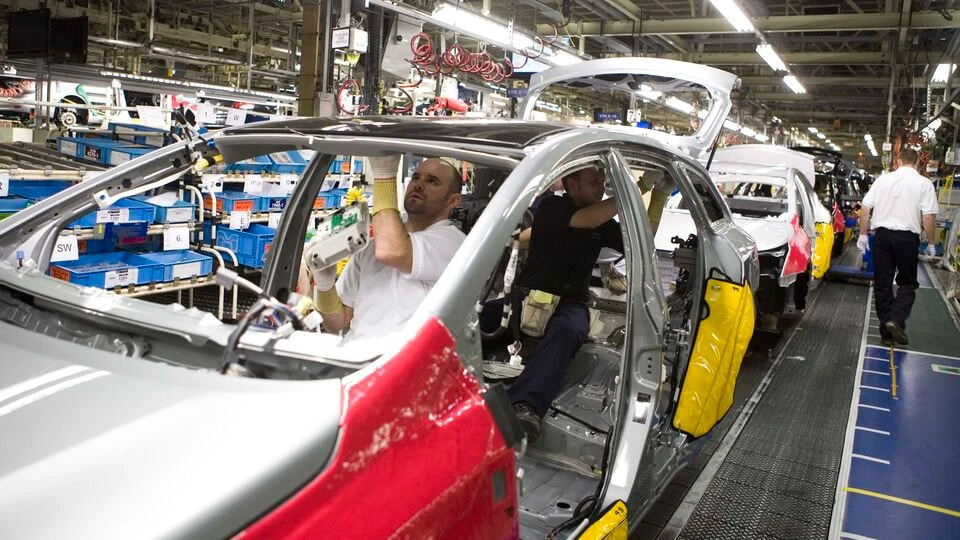Auto stocks continued to outperform on Dalal Street for the second straight day on Tuesday, August 19, following a stellar rally in the previous session.
Investor sentiment improved towards the domestic-focused sector after the government’s plan to lower GST rates lifted expectations that autos, currently under the highest tax slab of 28%, will benefit if the proposal is approved.
The proposed rate cut came as a relief for the auto sector, which has been under severe stress in recent quarters amid weak demand from urban consumers, higher tariffs, and a shortage of rare earth magnets.
To spur demand, companies offered heavy discounts, but that did little to improve sales, as prices remain higher due to multiple hikes taken earlier, largely on account of stricter regulations.
The sustained drop in demand, including for entry-level vehicles, pushed automakers to slow down production and shift their focus towards export markets, which have partly offset the weak domestic demand.
In the June quarter, both Hero MotoCorp and Bajaj Auto reported weak domestic demand, but higher exports supported performance. A similar trend was seen among passenger vehicle makers such as Maruti Suzuki and Hyundai Motor.
Against this backdrop, the government’s proposal to rationalise GST rates, which analysts believe could lower the GST slab to 18% from the current 28%, is expected to reduce ownership costs and drive demand back.
Domestic brokerage firm Motilal Oswal said that if the rates are reduced as proposed, vehicle prices could fall by about 7%, leading to a revival in demand. It further highlighted additional tailwinds for the sector, including the positive progress of the monsoon driving up rural sentiment, income-tax benefits, and potential interest rate cuts.
If GST rationalisation goes through as expected, it expects a strong pickup in demand from the upcoming festive season, potentially driving a re-rating of the sector. The brokerage expects small cars, three-wheelers, and commercial vehicles to benefit the most, while the gains for two-wheelers may be partially offset by the ABS mandate.
Small cars are likely to benefit if GST cuts are implemented
All passenger vehicles (PVs) currently fall under the 28% GST bracket, but sub-segments attract different rates depending on fuel type and cess. Small cars up to four meters are taxed at 28%, while larger cars face much higher rates of 43-50%.
Brokerage estimates suggest that any GST rate cuts would likely be limited to small cars in order to benefit the middle class, while larger cars may continue to be classified as ‘luxury’ and remain in the higher tax slab. As a result, Maruti Suzuki, with its strong small-car portfolio, is expected to emerge as a key beneficiary compared to its peers.
For commercial vehicles (CVs), which are taxed at 28%, a GST cut would provide a meaningful boost, further supported by a likely pickup in consumption. Among the listed players, Ashok Leyland, being a pure-play CV manufacturer, stands to benefit the most, while Tata Motors and Mahindra & Mahindra may also gain, though to a lesser extent, given their diversified portfolios, the brokerage noted.
Tractors, meanwhile, are currently taxed at 12%. However, the brokerage highlights that they suffer from an inverted duty structure, as most components are taxed at 18%, blocking input tax credits and straining working capital. Even if GST on tractors is reduced to 5%, the overall benefit may remain limited unless component tax rates are also cut.
Rate cut benefits in the 2-wheeler segment could be offset by ABS implementation
In the two-wheeler segment, models up to 350cc currently face a 28% GST rate, while those above 350cc attract 31% due to an additional 3% cess. This category is also expected to see a reduction to 18%.
However, the government is simultaneously pushing for ABS implementation across all two-wheelers, which Motilal Oswal expects could offset part of the benefit from lower GST.
“Thus, assuming the government’s push for its ABS mandate, the net benefit from the GST rationalisation would be limited for 2Ws,” the brokerage said.
